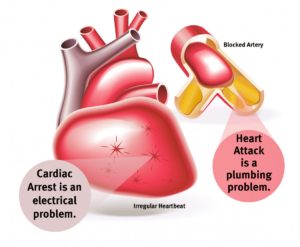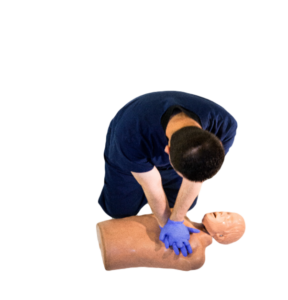Heart Disease in America — A Growing Epidemic
Heart disease is the number one killer in the United States. According to the American Heart Association, over 800,000 people die each year from heart disease and over an estimated 92.1 million suffer from other cardiovascular-related problems. To put these numbers in perspective, that is about 2,200 deaths each day, with an average of 1 death every 40 seconds. Heart disease is an epidemic that has devastating consequences.
From an economic standpoint, the estimated direct and indirect healthcare costs and lost productivity caused by cardiovascular disease comes out to more than $320 billion annually, as according to Barbara Bowman, Ph.D., director of CDC’s Division for Heart Disease and Stroke Prevention.
Heart Disease Risk Factors
While an individual’s lifestyle and habits may increase the risk of heart disease, some risk factors (such as those that people are born with) unfortunately cannot be changed. Let’s take a look at a few differences below.
Major risk factors that cannot be changed:
-
Age — As people get older, their chance of developing heart disease increases. The majority of people who die from heart disease are 65 or older.
-
Gender — Men are more likely to suffer heart attacks than women, and have them earlier in life. Women’s death rates from heart disease increase after menopause, however death rates are still higher for men.
-
Heredity (including race) — Heart disease is genetic and can transfer from parents to children. African Americans are at a higher risk of heart disease as they have more severe high blood pressure than Caucasians.
Mexican Americans, American Indians, native Hawaiians and some Asian Americans are also at a higher risk for heart disease. This is partly due to higher rates of obesity and diabetes.
Major risk factors that can be modified, treated or controlled:
-
Smoking — Smokers have a higher risk of developing heart disease than nonsmokers. Even secondhand smoke can increase the risk of heart disease.
-
High Cholesterol — The higher the blood cholesterol, the great the risk of developing heart disease. Cholesterol can be affected by a person’s age, sex, heredity and diet.
-
Low-density-lipoprotein (LDL) cholesterol = “bad” cholesterol: A low LDL cholesterol level is considered good for your health, however it should not be in only factor in guiding treatment to prevent heart attack and stroke.
-
High-density-lipoprotein (HDL) cholesterol = “good” cholesterol: A higher HDL cholesterol is typically better. People with high blood triglycerides usually also have a lower HDL cholesterol. Genetic factors, type 2 diabetes, smoking, being overweight and being sedentary can all result in lower HDL cholesterol.
-
Triglycerides: Triglyceride is the most common type of fat in the body. Normal triglyceride levels vary by age and sex. A high triglyceride level combined with low HDL cholesterol or high LDL cholesterol is associated with atherosclerosis, the buildup of fatty deposits in artery walls that increases the risk for heart attack and stroke.
-
Total cholesterol: This is calculated by adding HDL + LDL + 20% of triglyceride level.
-
High Blood Pressure — High blood pressure is also sometimes referred to as the “silent killer,” because there are no warning signs. It increases the heart’s workload, causing the heart muscle to thicken and become stiffer. This stiffening of the heart muscle is not normal, and causes the heart not to work properly.
-
Physical Inactivity — Heart disease increases in individuals that have an inactive lifestyle. Regular, moderate-to-vigorous physical activity helps reduce the risk of heart and blood vessel disease. Even moderate-intensity activities help if done regularly and long term. Physical activity can help control blood cholesterol, diabetes and obesity, as well as help lower blood pressure in some people.
-
Obesity and Overweight — People with excess body fat (especially in the waist area) are at greater risk of developing heart disease.
-
Diabetes mellitus — Diabetes dramatically increases the risk of developing heart disease. At least 68% of people greater than 65 years of age with diabetes die of some form of heart disease and 16% die of stroke.
Lifestyle changes to reduce heart disease:
-
Not smoking
-
Good nutrition
-
Good cholesterol
-
Physically active
-
Healthy weight
-
Mange diabetes
-
Reduce stress
-
Limit alcohol consumption
Source: “Understand Your Risks to Prevent a Heart Attack.” American Heart Association, Sept. 2016.
 Heart Attack vs. Cardiac Arrest — Is there a Difference?
Heart Attack vs. Cardiac Arrest — Is there a Difference?
Many people use the terms heart attack and cardiac arrest interchangeably, however they are not the same thing!
A heart attack occurs when blood flow to the heart is blocked. A blocked artery prevents oxygen-rich blood from entering the heart, causing tissue death — it is a “plumbing” problem. A heart attack can be caused from heart disease. Symptoms of a heart attack include chest pain, shortness of breath, cold sweats and nausea/vomiting. Women may also have back or jaw pain. Emergency help must be called immediately to prevent further damage to the heart.
Cardiac arrest, on the other hand, occurs when the heart stops beating unexpectedly. This is triggered by an electrical malfunction in the heart that causes an irregular heartbeat (known as an arrhythmia). Within seconds, a person stops breathing and become unconscious. Death occurs within minutes if the victim does not receive adequate treatment. Nearly 350,000 out-of-hospital cardiac arrests occur annually in the United States.

CPR — Anyone can do it!
CPR, or cardiopulmonary resuscitation, must be performed on any person that is not responding and not breathing — a person in cardiac arrest. CPR helps restore partial flow of oxygenated blood to the brain and heart, thus delaying tissue death in the brain. Every minute that CPR and defibrillation (AED) are delayed, the victim’s chance of survival is reduced by almost 10%! Many people are afraid to perform CPR because they never learned it, or are afraid to hurt the victim or get sued. However, any person without training can still perform CPR and not be liable due to the Good Samaritan laws, which are in every state. The most important part of CPR is performing chest compressions in the center of the chest at a rate of 100-120 compressions a minute.
 Heart Attack vs. Cardiac Arrest — Is there a Difference?
Heart Attack vs. Cardiac Arrest — Is there a Difference?

